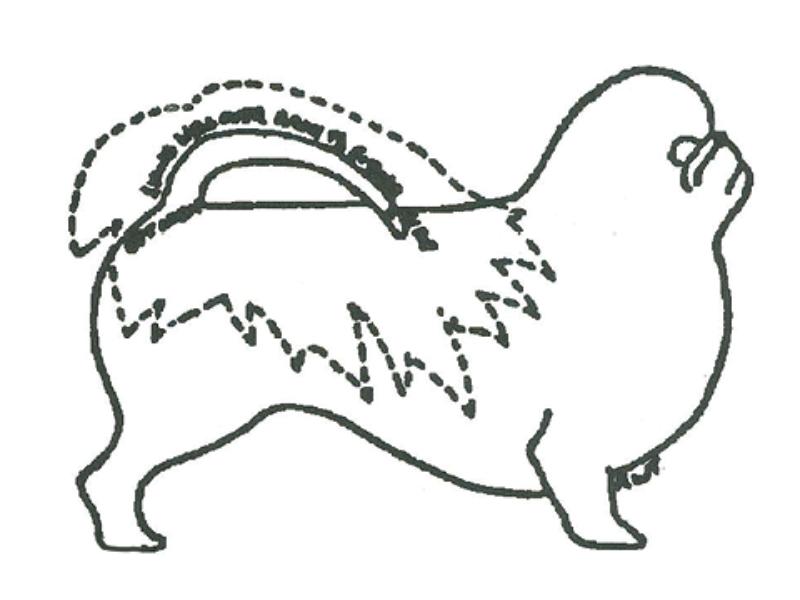Nigel Aubrey-Jones passed away on June 3, 2003. TNT is reprinting this article on behalf of the Pekingese Club of America as a tribute to his lifetime of devotion to the breed.
Pekingese Tail Carriage
Tail Carriage is one of the most important parts of the Pekingese anatomy. It can tell us so much about the dog—how sound he is both mentally and physically; if he is true to breed character. A nervous or uncertain dog will drop his tail. A fearless dog will carry his tail over his back with pride and dignity. A nervous dog cannot move fearlessly or have an alert, intelligent expression. We know how important tail carriage is from watching the amount of time exhibitors spend trying to make sure or hoping that it is in the correct position… or at least giving that impression!
A tail carried well over the back with a forward curve, and the plume draping well down to either side, gives the ideal outline.
The Breed Standard says: “The high set tail is slightly arched and carried well over the back… Long, profuse, straight fringing may fall to either side.” High-set tail placement is most important, as a low tail set cannot be camouflaged no matter to what great lengths the feathering has grown. A low tail set gives an objectionable overall impression, as it destroys the fearless and aggressive outline of the dog. A tail carried well over the back with a forward curve, and the plume draping well down to either side, gives the ideal outline.
In making progress, we seem to have developed some exaggerations, and tail carriage is one of them. We see a number of Pekingese that carry their tail straight down the middle of their backs like Pomeranians. Some look as if they had been glued on!
Correct tail set and carriage can be seen quite easily during early puppyhood, and it has been my experience that incorrect tail placement or carriage does not improve with age.
This is just as untypical of the breed as half-mast position carried over the flank. Tail carriage can indicate to the experienced eye whether a dog has a roach back or a badly-formed hindquarter.
Correct tail set or carriage cannot be present if the dog has a roach back. Incorrect tail set and tail carriage can also mean incorrect or poor hind action.
With a half-mast tail set, you invariably see wide and uncertain hind action, which is not characteristic of a fearless breed of dog. To be typical and true to the character of his breed, a Pekingese should have his tail carried well over his back at all times, whether he is moving or standing. Correct tail set and carriage can be seen quite easily during early puppyhood, and it has been my experience that incorrect tail placement or carriage does not improve with age. Growth of plumage might conceal its obviousness, but the basic structure does not alter. Tail carriage is something worthy of a great deal of thought when planning breeding programs.

